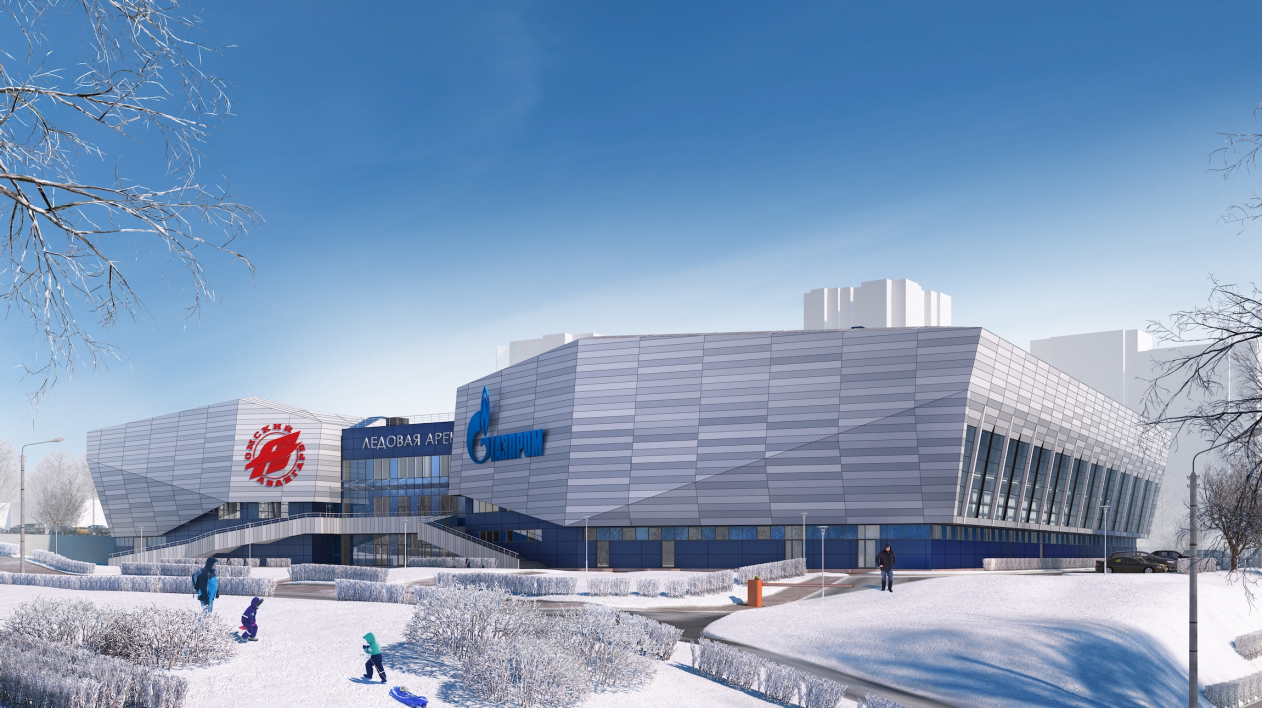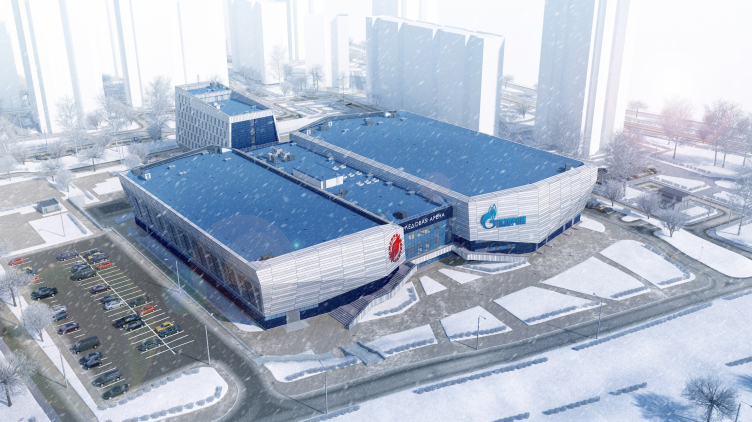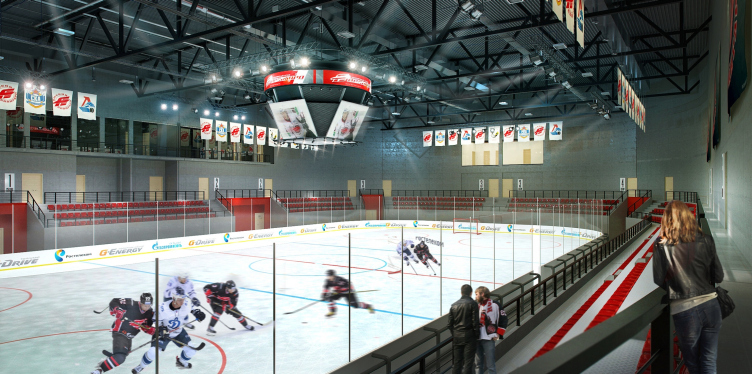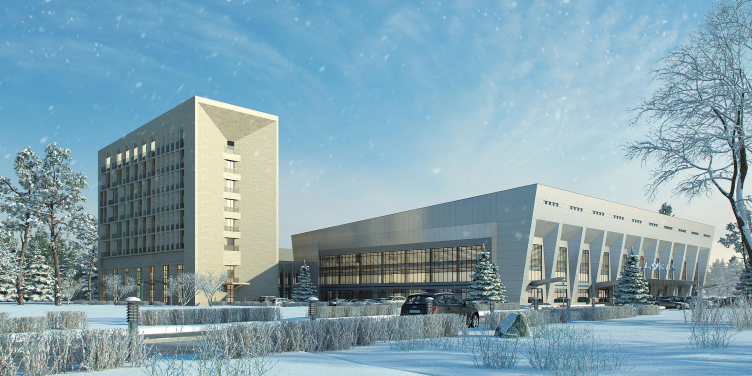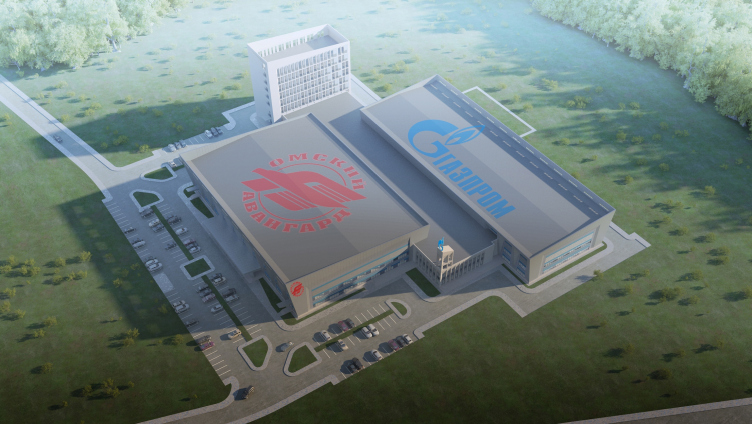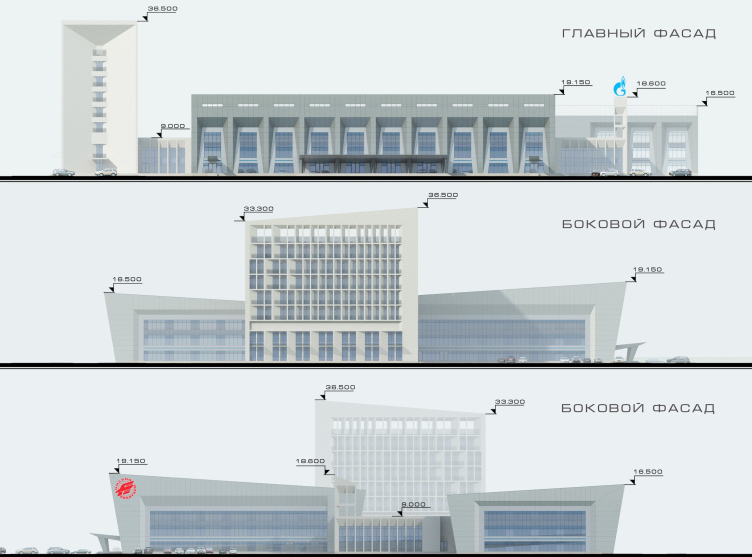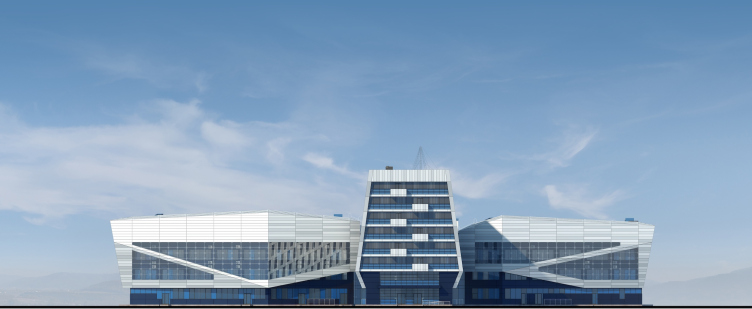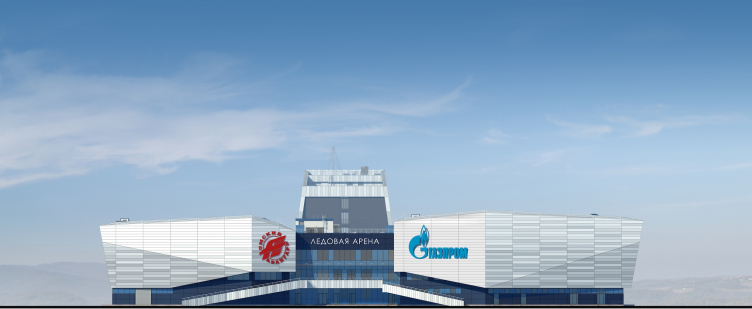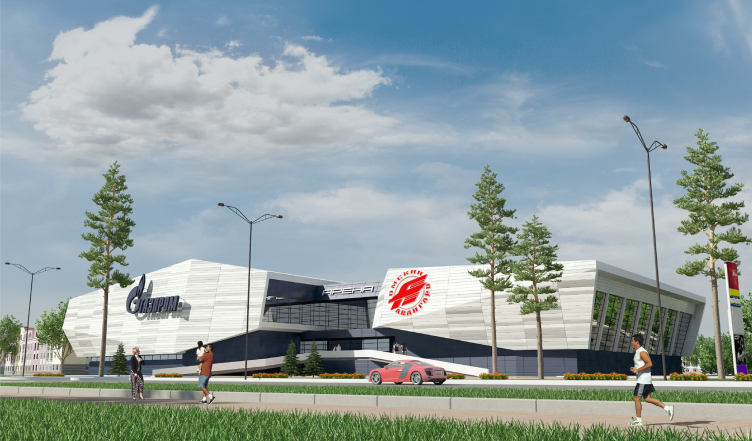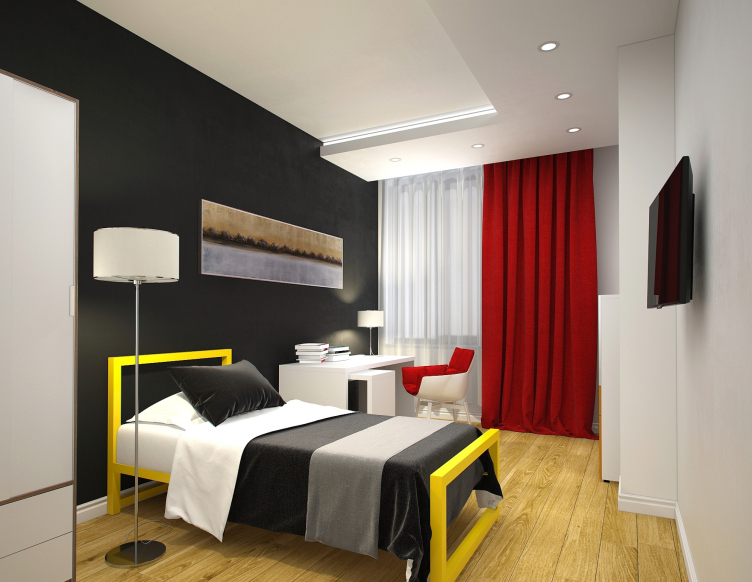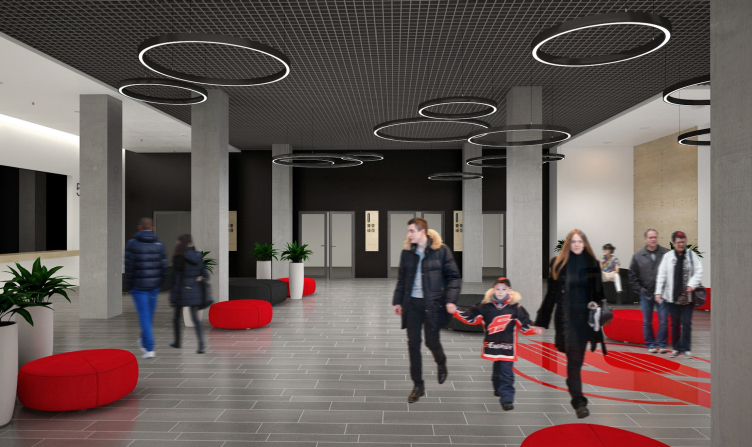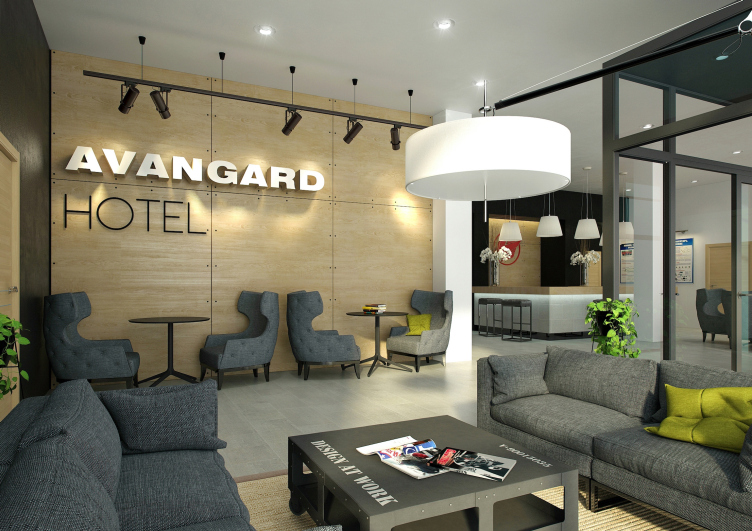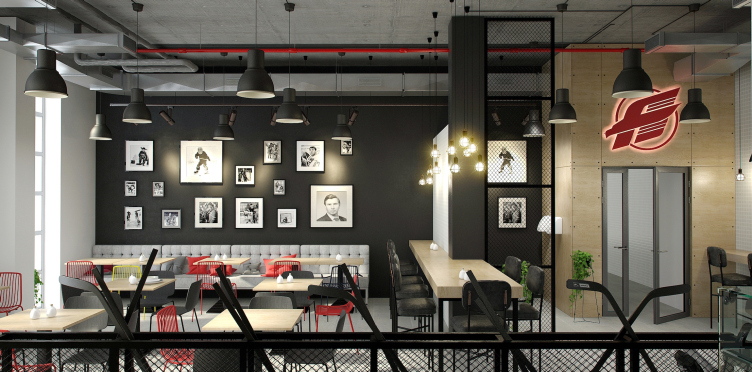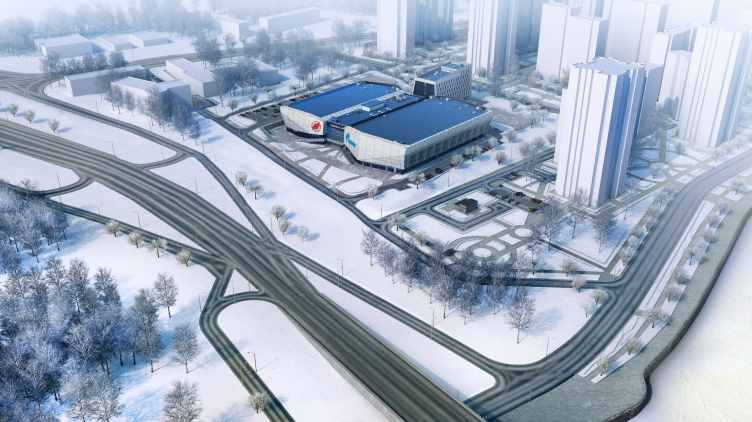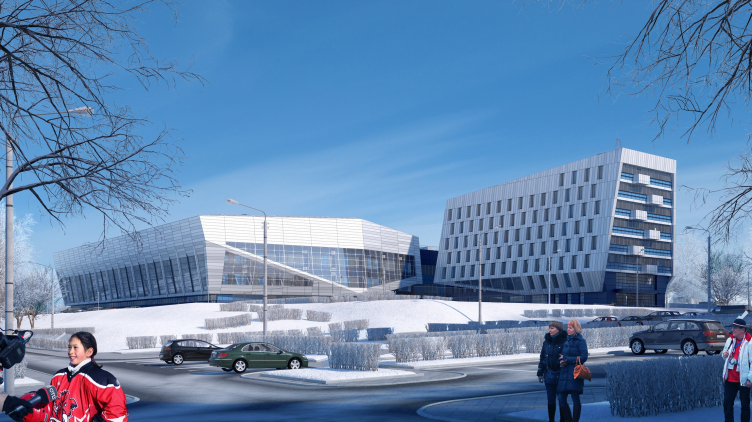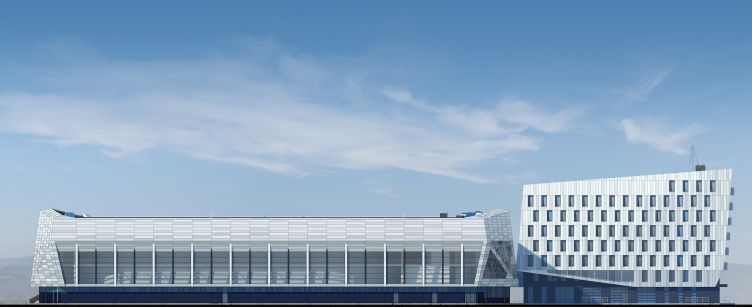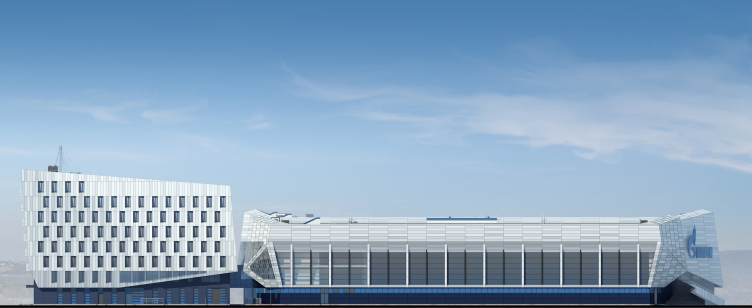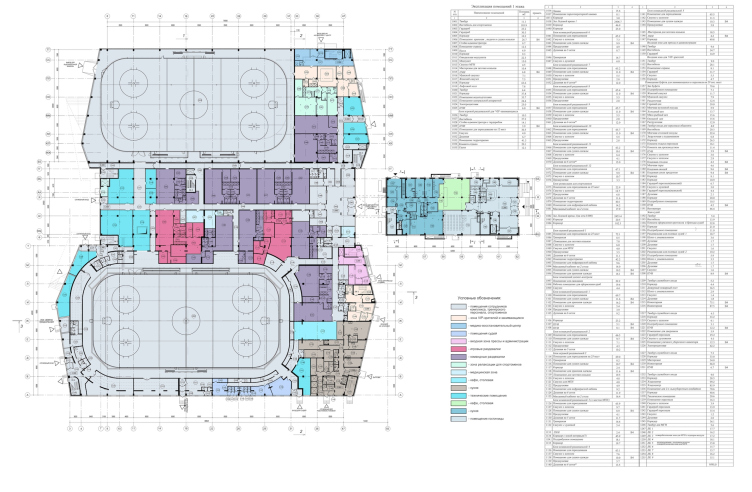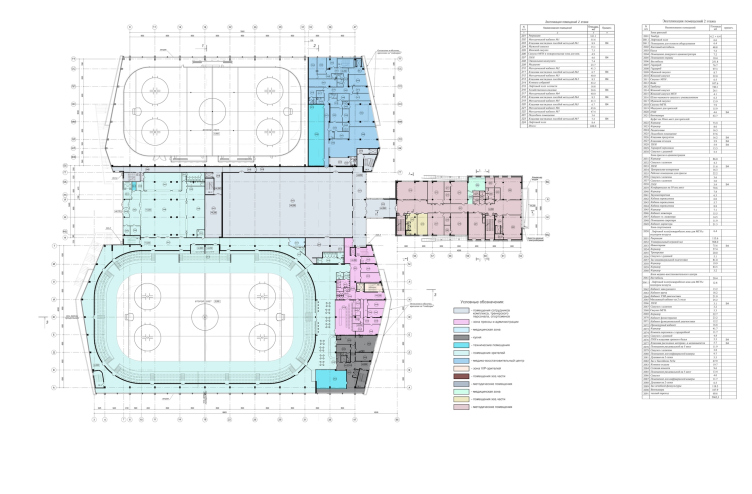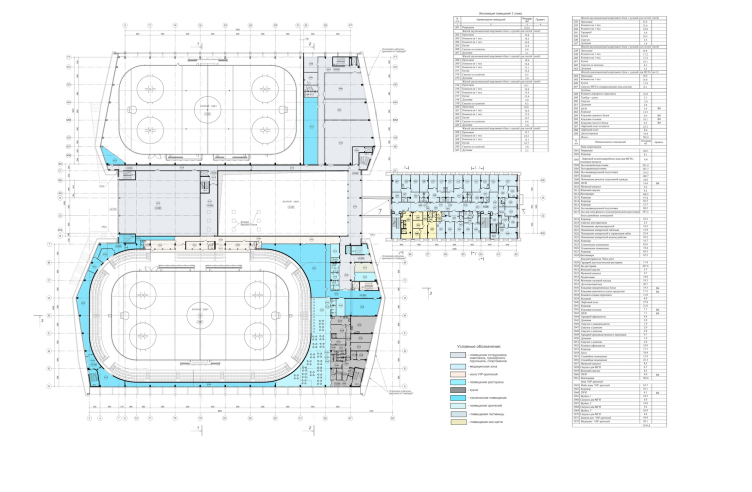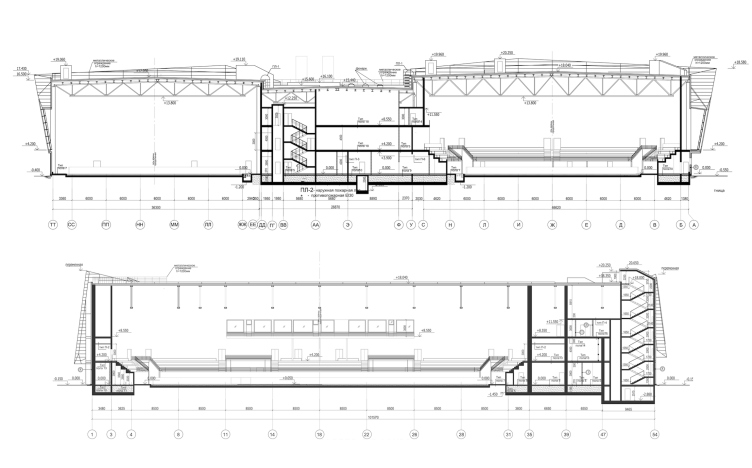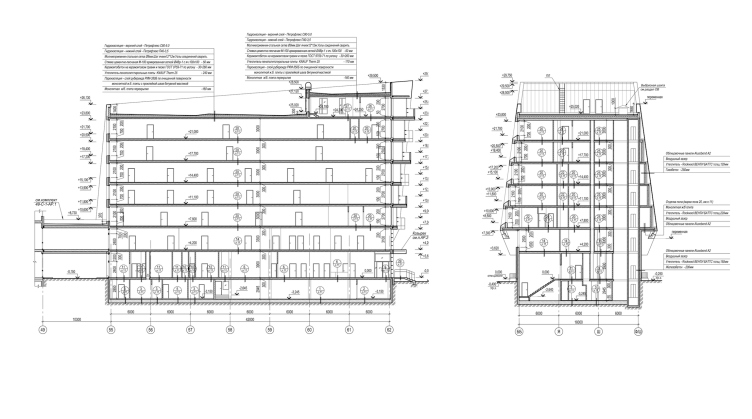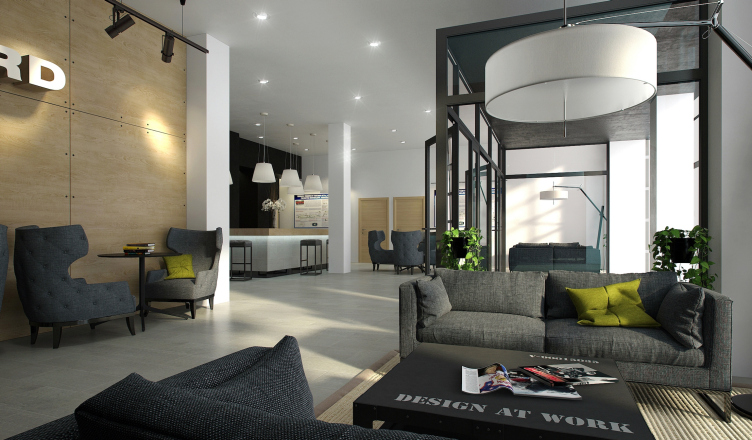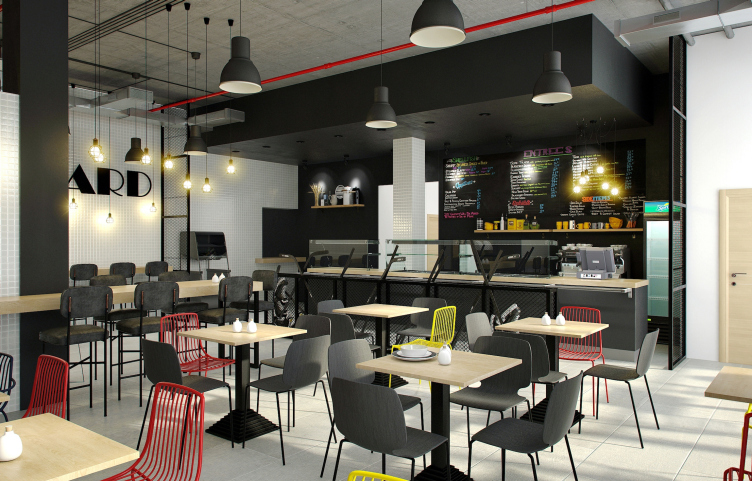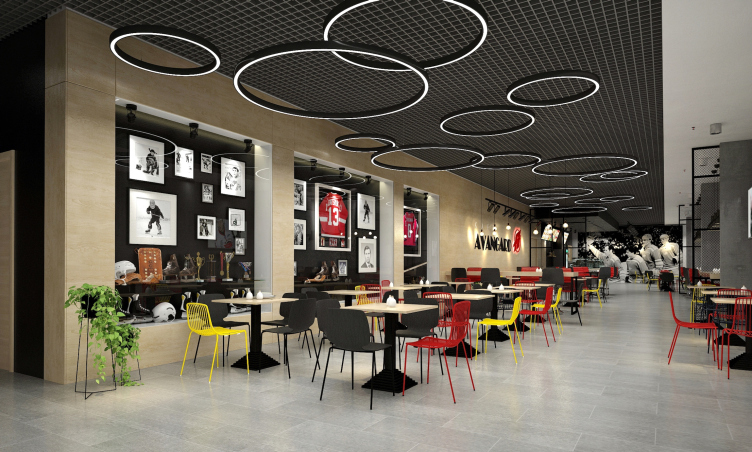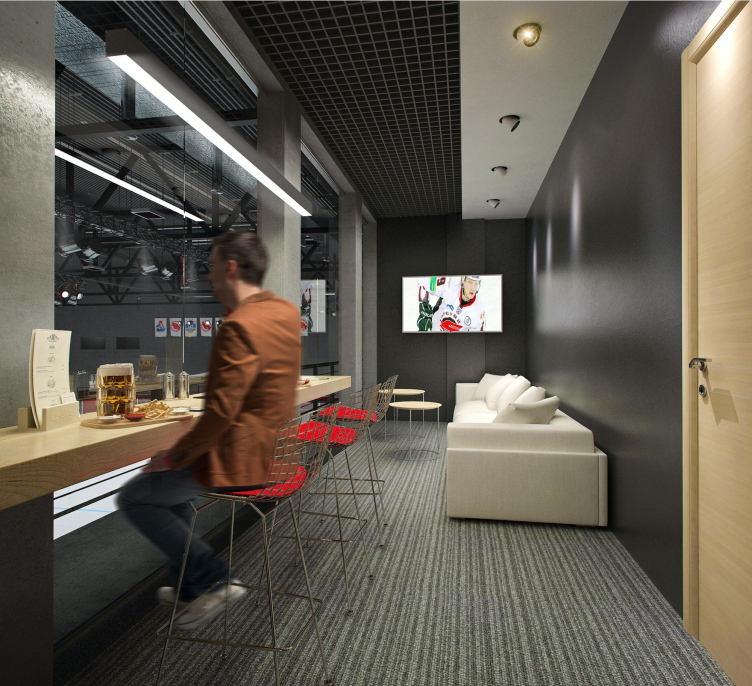The construction of the sports complex with a hotel in the city of Omsk on the right bank of the Irtysh River, next to a road junction and a bridge, is due to be completed as early as in 2016. The new building fits in perfectly with the logic of the federal policy of promoting sports in the regions, and it belongs to the architectural genre that by definition considerable means of expression in its arsenal and is capable of making significant changes to the appearance of the city.
"Omsk hockey club "Avangard" has a traditionally strong children and youth sports school - says the leader of the authors team, Sergey Tsytsin - Its alumni become not only the players of the Omsk club but also the leading hockey clubs in this country and abroad. This is how the idea came about to create a fully-fledged complex that would include sports, education, board and lodging, and medical services - a state-of-the-art facility conforming to all the requirements of the KHL. Such conditions allow for achieving great results - and for this reason the idea of the complex appealed to me, and designing it turned out to be a great experience for our studio".
In accordance with the specifications, the complex included two indoor skating rinks, one of them being the training one, and the other being designed for holding competitions on it, as well as a number of gyms, auditoriums, a medical center, and a hotel designed to accommodate the out-of-town students, guest teams, and their coaches.
"Avangard" Hockey Academy © Sergey Tsytsin Architectural Studio
"Avangard" Hockey Academy © Sergey Tsytsin Architectural Studio
As a result, the architects came up with a squatting rectangular volume of irregular outlines based on two parallel ice arenas. These two are separated by a three-story intermission zone that includes maintenance facilities, the sportsmen's lockers, and a recreation area. Parallel to its axis stands an eight-story hotel building connected with a covered warm passage to the main unit.
Both skating rinks have an equal size of 30x60 meters. One of them is designed for practicing and public skating. The other is for contests and competitions; it has one thousand spectator seats.
"Avangard" Hockey Academy. The arena © Sergey Tsytsin Architectural Studio
On the hotel side, each arena has a special extra zone for educational and training events, medical services, feeding the staff, administrative and maintenance premises.
Sergey Tsytsin studio submitted two versions of the project to the customer. The first version has one and only main façade commanding the river and enhanced by a monumental portal on the cross axis of the complex. The façade uniting the two arenas and overlooking the highway has a step-like irregular outline. Its style, however, is more austere and conservative: the rhythmic vertical fracturing combined with expressive overhangs of the slanting cornices remind of the soviet monumental architecture of the seventies. The hotel complex is sturdy and static.
"Avangard" Hockey Academy © Sergey Tsytsin Architectural Studio
"Avangard" Hockey Academy © Sergey Tsytsin Architectural Studio
"Avangard" Hockey Academy. Facades © Sergey Tsytsin Architectural Studio
The other version is more modern, with curvilinear "sculptural" shapes that convey the impulse of the muscular energy. This shell is in fact a hang-on decoration that is mounted on top of the main functional "box". There are two main façades in this version, situated along a longitudinal axis. Their symmetric compositions look pretty much alike: each one is a glass screen with two flanking wings on its sides that look like a plunging swimmer's arms arrested in midair. In this version, the hotel block turned 90 degrees and took on a slight tilt, like a flagship sailing against the wind.
"Avangard" Hockey Academy. The main facade © Sergey Tsytsin Architectural Studio
"Avangard" Hockey Academy. The main facade © Sergey Tsytsin Architectural Studio
"Avangard" Hockey Academy © Sergey Tsytsin Architects
The second, more radical, project was chosen to be implemented.
"Our customers not only allowed us to create a functional object - Sergey Tsytsin shares - but also create some dramatic image so as the building could be both a decoration of the city and at the same time reflect the typology inherent to sports facilities. Sports, energy, focus, concentration, and the motif of hockey as such - these are the motives that we wanted to reflect in our project".
In addition to the external appearance and the working documents, the architectural companies designed the interiors of the complex. They are also based on the theme of energy and masculinity - but here the bionic elements give way to avant-garde, aptly echoing the club's name. Instead of curvilinear tight shapes, the building is reigned supremacist geometry and color contrasts. The coloristic solution of the complex is based on the opposition of the overall monochrome background, natural wood, and bright accents of red, yellow, and blue. The abstract geometric patterns are contrastingly offset by the figurative hockey narratives on the walls, and the fancy shapes of the furniture and hardware.
"Avangard" Hockey Academy. Hotel room © Sergey Tsytsin Architectural Studio
"Avangard" Hockey Academy. The arena © Sergey Tsytsin Architectural Studio
"Avangard" Hockey Academy. Hall of the hotel © Sergey Tsytsin Architectural Studio
"Avangard" Hockey Academy. The hotel cafe © Sergey Tsytsin Architectural Studio
The building stands surrounded by sparse soviet-era houses scattered over the sloping bank of the Irtysh River. On the opposite bank of the river, there is yet another vis-à-vis complex for adults. Thus, the new academy of hockey that stands next to an important junction on the bank of the Irtysh will become a significant town-planning unit organizing the panorama of the river. Possibly, it will be this particular building that will give the city of Omsk one of those plastique and social accents that are now commonly called the catalysts of the healthy city environment.
Immediately around the complex, there will be a mini-football field, a plastic-ice skating rink, an open-air gym, and a green recreation zone - all organized as a single landscape with minor architectural forms.
The complex is expected to serve not only future sport stars but the city people as well, organizing active recreation and forming the healthy lifestyle environment that we are in such a need of.
"Avangard" Hockey Academy © Sergey Tsytsin Architectural Studio
"Avangard" Hockey Academy © Sergey Tsytsin Architectural Studio
"Avangard" Hockey Academy. Side facade © Sergey Tsytsin Architectural Studio
"Avangard" Hockey Academy. Side facade © Sergey Tsytsin Architectural Studio
"Avangard" Hockey Academy. Plan of the first floor © Sergey Tsytsin Architectural Studio
"Avangard" Hockey Academy. Plan of the second floor © Sergey Tsytsin Architectural Studio
"Avangard" Hockey Academy. Plan of the third floor © Sergey Tsytsin Architectural Studio
"Avangard" Hockey Academy. Section view © Sergey Tsytsin Architectural Studio
"Avangard" Hockey Academy. Section view © Sergey Tsytsin Architectural Studio
"Avangard" Hockey Academy. Hotel lobby © Sergey Tsytsin Architectural Studio
"Avangard" Hockey Academy. The hotel cafe © Sergey Tsytsin Architectural Studio
"Avangard" Hockey Academy. The arena cafe © Sergey Tsytsin Architectural Studio
"Avangard" Hockey Academy. The arena cafe © Sergey Tsytsin Architectural Studio
